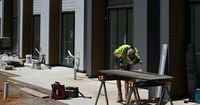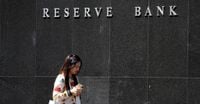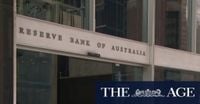Australia is experiencing a noteworthy shift in its monetary policy landscape as signs of cooling inflation pave the way for anticipated interest rate cuts by the Reserve Bank of Australia (RBA). Recent comments from Treasurer Jim Chalmers express confidence that the economy has turned a corner in the ongoing battle against inflation, suggesting that the worst may indeed be behind us.
The federal budget released on March 25, 2025, indicates significant adjustments in the economic forecast, with Treasury projecting underlying inflation to settle within the RBA’s target band of 2 to 3 percent by mid-2025. This marks a shift that arrives six months sooner than previously expected, presenting a more cautiously optimistic outlook for the economy. Chalmers stated, “All of this means the soft landing we have been planning and preparing for is looking more and more likely.”
According to Chalmers, Australia is emerging from a global spike in inflation in a more favorable position compared to many other advanced economies. Economic growth is projected to reach 1.5 percent this year with increases to 2.5 percent in 2026 and 2027, while unemployment forecasts have also improved, now expected to peak at 4.25 percent.
The RBA's next interest rate decision is set for April 1, 2025. Currently, experts from the Big Four banks predict that the RBA will maintain its interest rate. Notably, markets assign only an 8 percent chance of a rate cut at this upcoming meeting. However, economists from CBA, NAB, and Westpac foresee a likely cut in rates by May, while ANZ anticipates only one additional cut later in August.
AMP chief economist Shane Oliver notes that the new budget measures, which include a $150 energy bill rebate extension, tax cuts, and cheaper medications, may complicate the RBA's job. “While the cost-of-living measures will keep headline inflation down, the RBA will focus on underlying inflation,” he explained, suggesting that ongoing government spending could complicate the bank’s task of controlling inflation.
Recent reports have shown headline inflation dropped slightly to 2.4 percent in February, down from 2.5 percent the previous month, with core inflation dipping from 2.8 percent to 2.7 percent. These figures have led to speculation about potential relief for mortgage holders later this year. Westpac chief economist Luci Ellis remarked, “The RBA was too hawkish in its rhetoric last month to consider a cut at this meeting,” indicating that while inflation is cool, caution will prevail in the near term.
The RBA is poised to keep a watchful eye on the quarterly data due at the end of April, which will offer a clearer picture of economic trends and price pressures. Following the recent budget's indication of significant s deficits, financial markets have dialed back their expectations for rate cuts. Rates are expected to decrease by 65 basis points over the next year—a slight drop from the previous forecast of 68 basis points.
Additionally, housing costs, food prices, and alcohol tariffs have all escalated. The ABS reported a rise in food prices of 3.1 percent and housing costs up by 1.8 percent over the year. Despite these increases, cheaper energy prices—thanks to government rebates—have significantly contributed to consumer inflation moderation, with electricity costs decreasing by 13.2 percent when compared year-over-year.
JP Morgan's chief investment strategist, Tom Kennedy, stated that the CPI remains “under control” and continues to forecast another 25 basis point rate cut in May 2025, aligning with Oliver’s prediction. However, experts remain divided on whether the RBA will act sooner rather than later. “It's doubtful this will be enough to see the RBA ease again at its April 1 meeting,” Oliver added.
The RBA’s assessment will be pivotal as broader economic conditions evolve. Current unemployment stands at low levels around 4.1 percent, suggesting resilience within the job market, further reinforcing expectations of economic stability. The anticipated GDP growth targets, alongside the lingering possibility of a global trade war, could complicate the RBA’s decision-making process.
In conclusion, the RBA finds itself in a conundrum of choosing between supporting economic growth through interest rate cuts while managing inflationary pressures sparked by government budgetary measures. The next few months are critical, not only for tracking inflation developments but also for understanding the ongoing impact of fiscal policy on economic stability and homeowners. As the RBA navigates these challenges, both economic analysts and average Australians alike will be closely monitoring the outcomes of upcoming meetings and forecasts.









